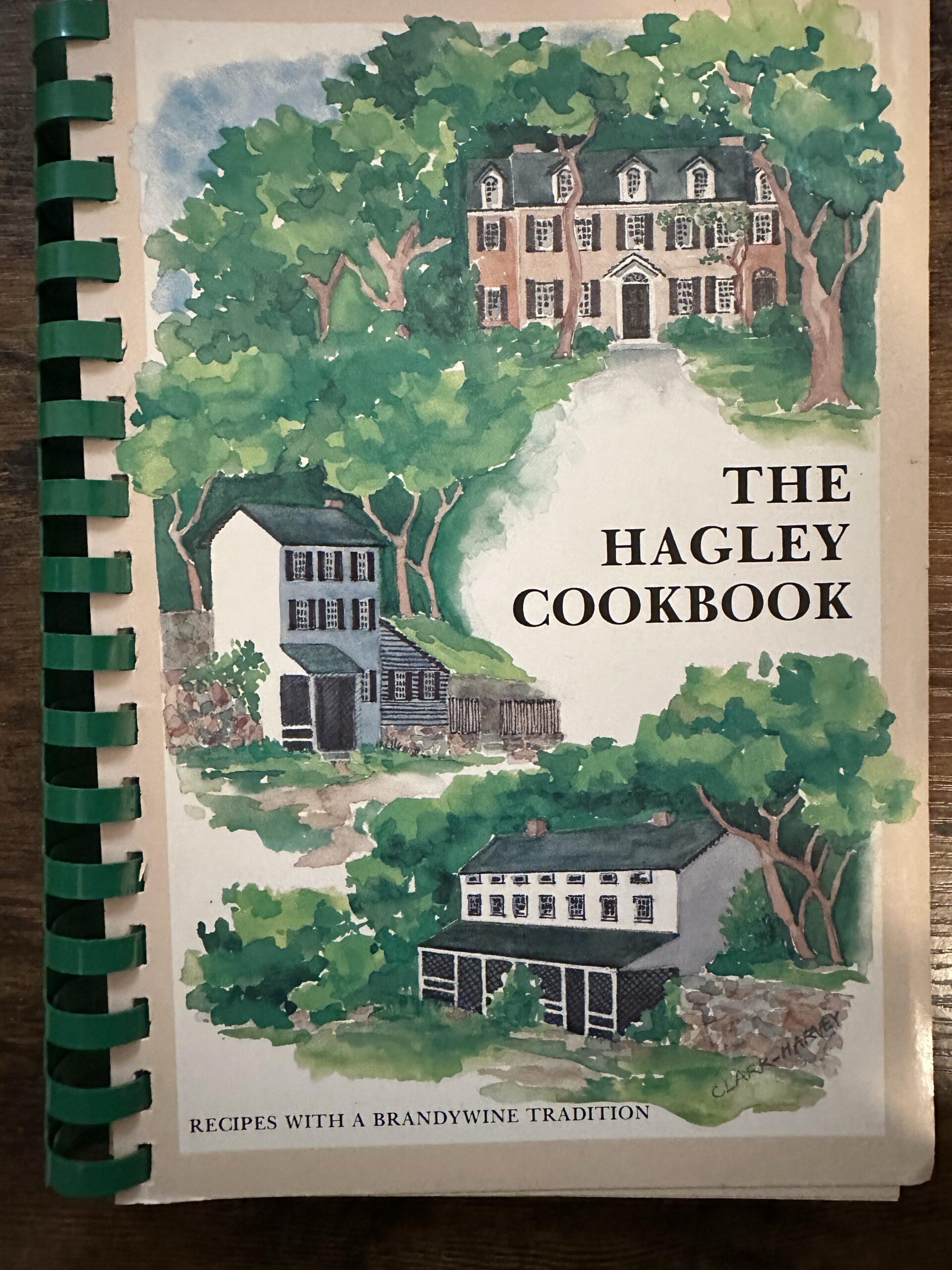The Hagley Museum: Recipes with a Brandywine Tradition compiled by The Hagley Volunteers Cookbook Committee. Wilmington, Delaware 1983
The Hagley Museum is I think my favorite Delaware museum. Not only does it tell the stories of the Duponts but also the workers of the area, something other museums in the area gloss over.
A ton of work went into this cookbook. There is a lengthy introduction where the director at the time, Walter J. Heacock talks about the inspiration for the book–an address he made at an unnamed organization “long celebrated for its devotion to good food and fine wine” and how the goal of the book to provide both recipes and insight into the people who lived in the 19th century along the Brandywine.
I would classify this as a community cookbook and not just a museum publication because there are a few pages of acknowledgments of those who donated recipes, cookbooks, and memories to be included in the book and their ties to Hagley and the region.
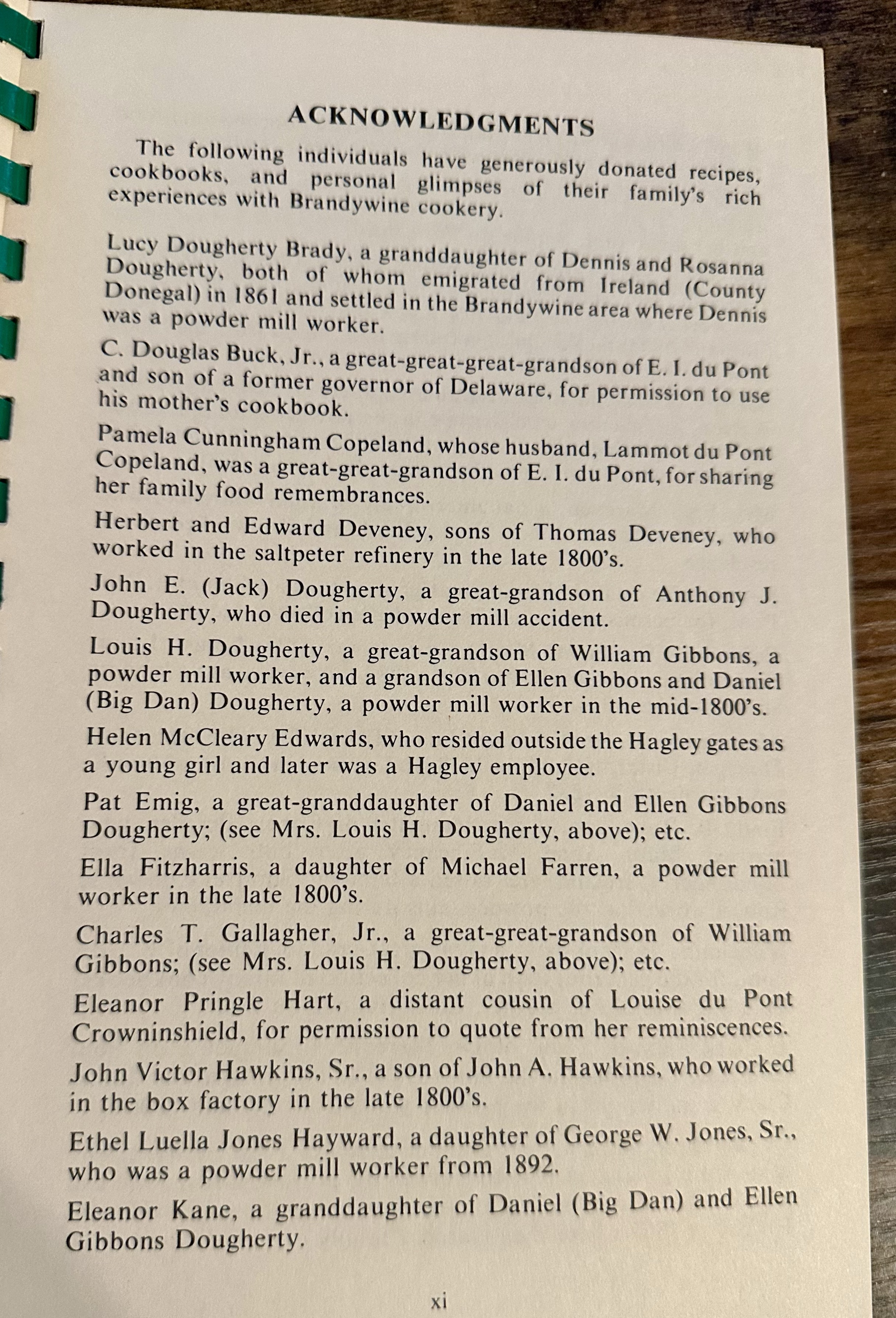
There are a few places where the book differs from other community cookbooks. The recipes are not individually credited and unlike most community cookbooks they make a point of how volunteers tested each recipe prior to its publication. The focus of the book is food of the 19th century which also sets it apart from most community cookbooks. I would think in the 1980s there must have been a push to document some of these ideas when people who remembered and knew people from the 1800s were around or who were even still alive themselves.
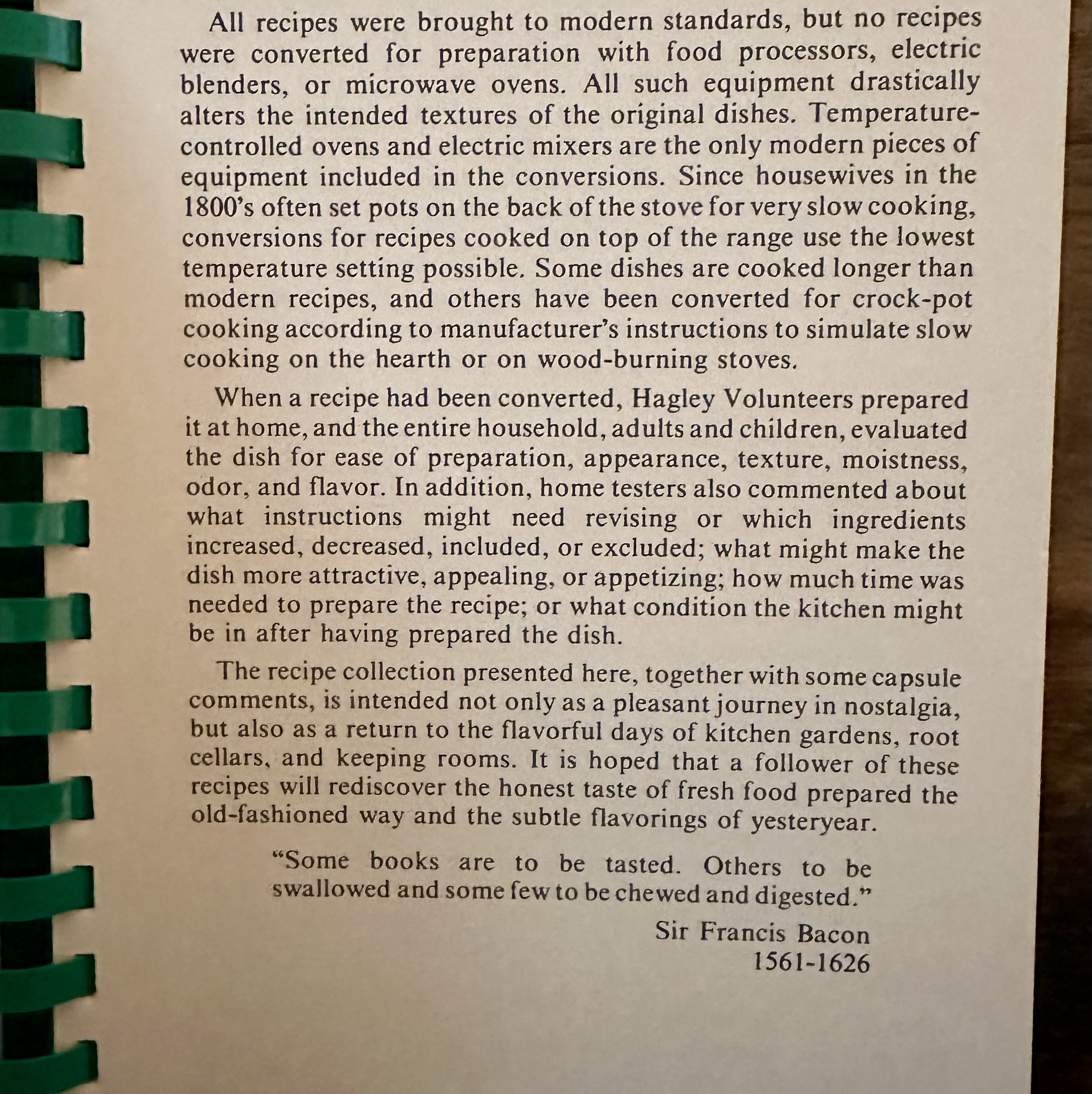
There is a lengthy introduction that goes over the history of cooking in the Brandywine Valley, the ingredients that were popular and available to people at that time, immigration, and kitchen innovations. It’s really quite complete and interesting.
There is a chart of symbols for recipe sources and a “table of measure” that translates some measurements–5 nutmegs equals one ounce, and so forth. Largely the recipes do use modern measurements.
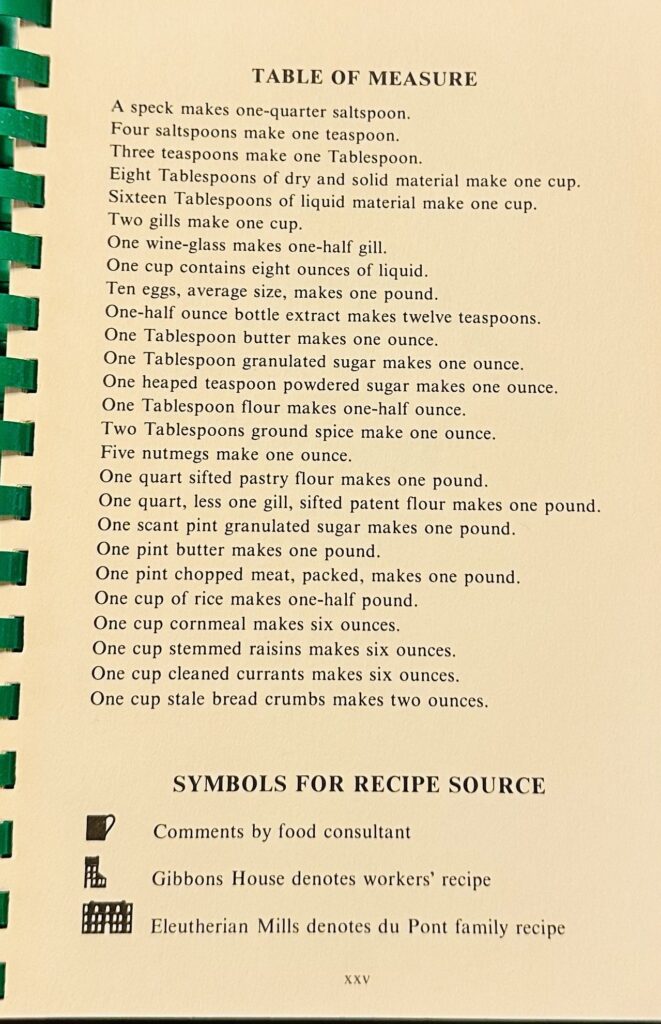
Some of the recipes run a little to vague or hard to source but most are pretty straightforward and can be made today.
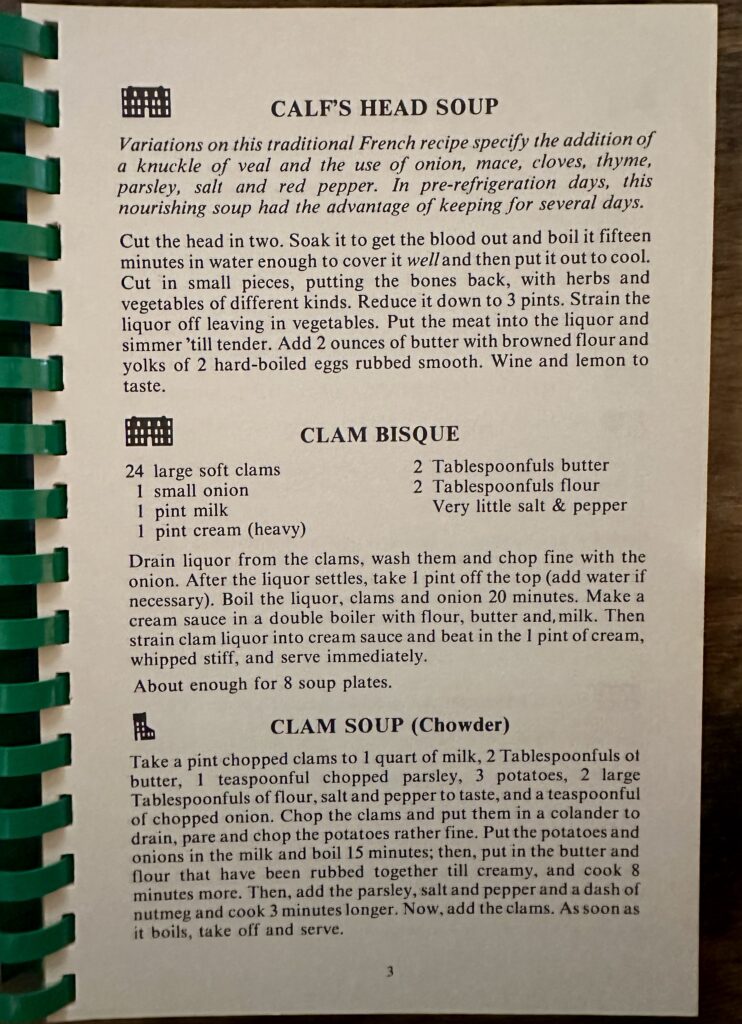
The recipes are pretty varied–we have some jellies, salad dressings, lots of punch, ice cream, cakes, game meat, and some regional favorites like turtle soup.
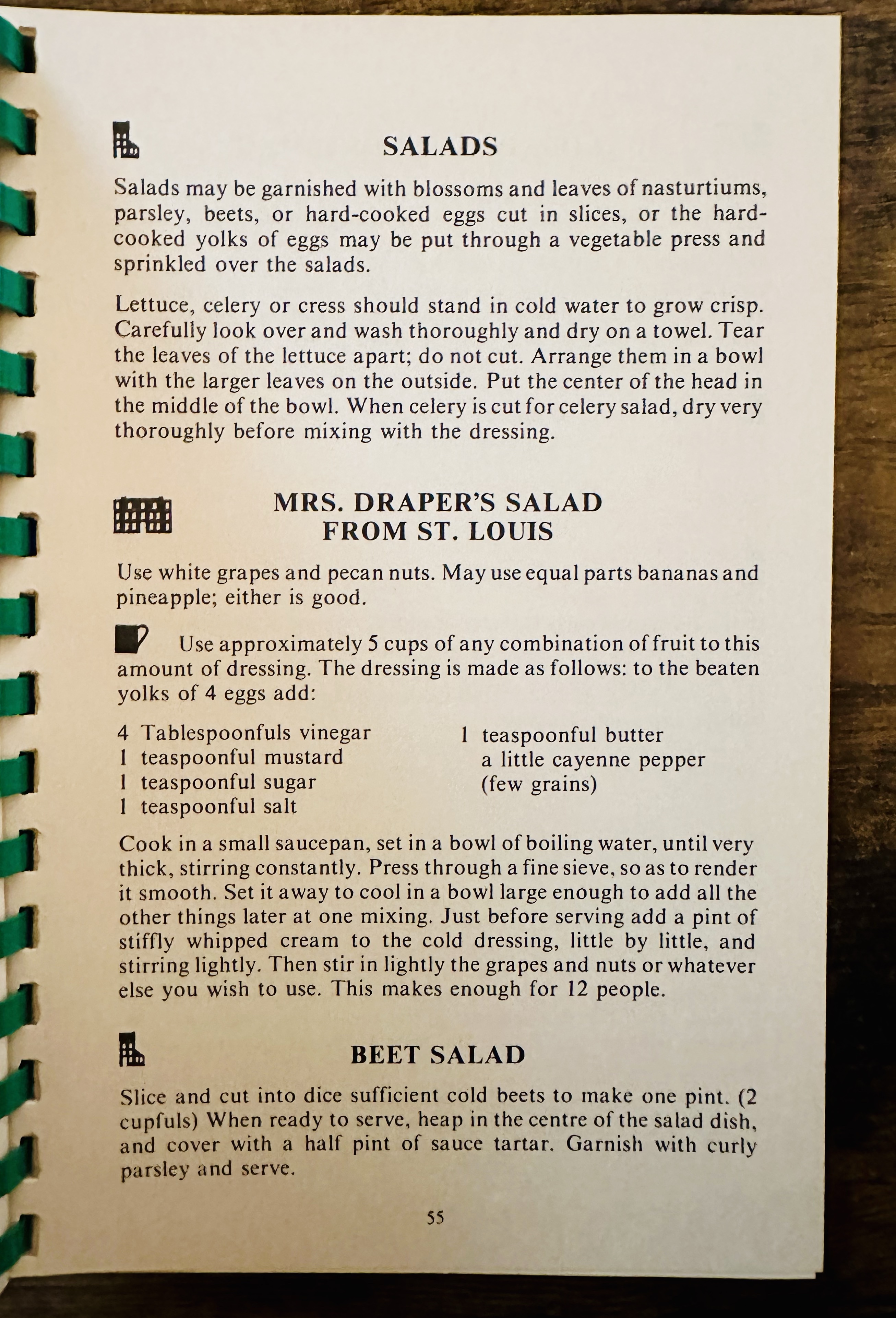
There are few headnotes but some recipes have some tips included.
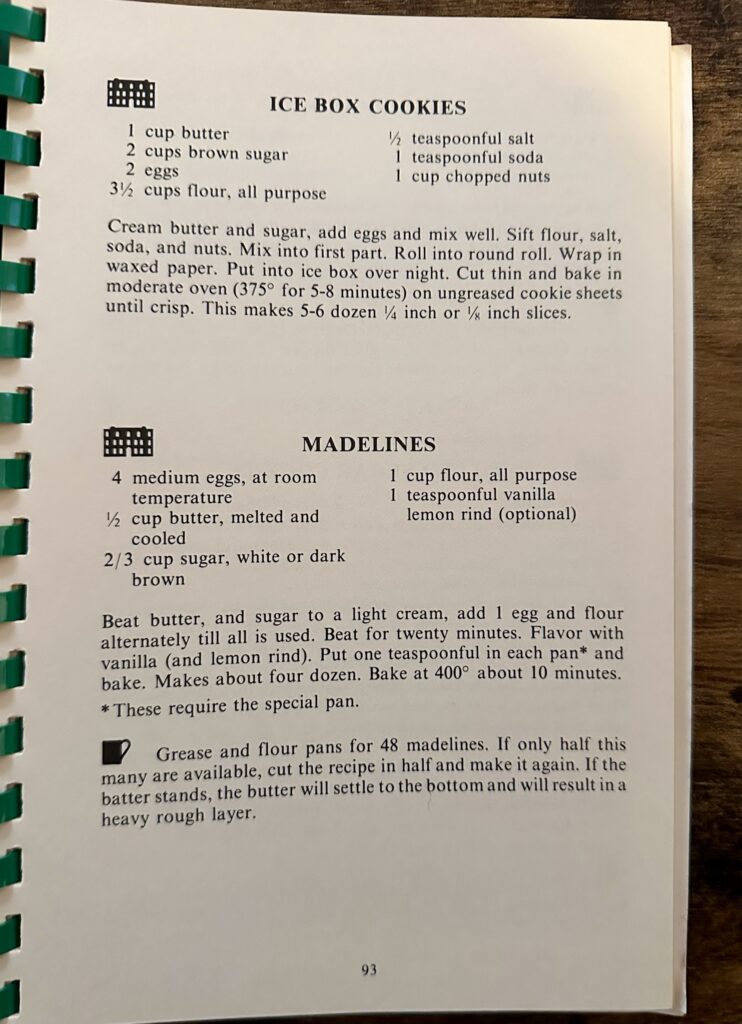
The book was pretty pricy at almost $11 in 1983 and has the distinction of being the only book I’ve come across with a chapter entitled “blandishments and accouterments”.
